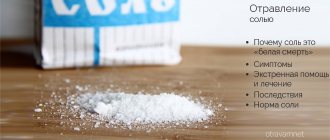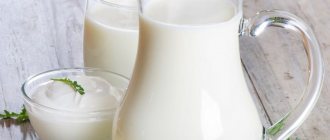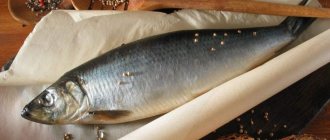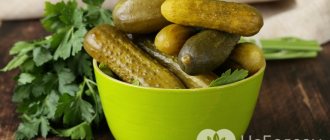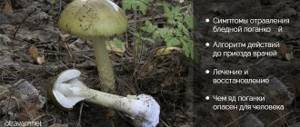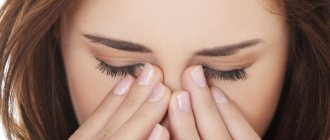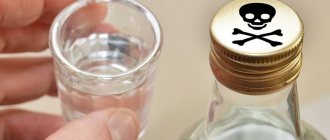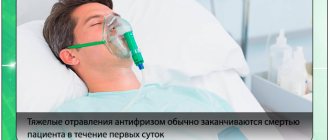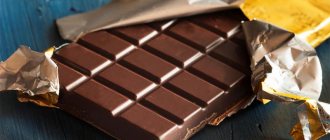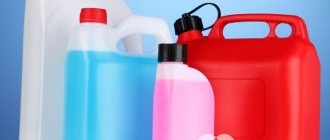What to do if you overdose on salt?
In case of acute salt poisoning, an important element of first aid is the timeliness of its provision.
Regardless of the circumstances, it is recommended to immediately call a medical team to the scene of the incident, describing as accurately as possible the type of ingested compound, its concentration (if known) and other important data.
It should also be noted that first aid is effective for acute forms of overdose, while chronic cases are considered only as the prerogative of inpatient treatment.
Possible first aid procedures include:
- Gastric lavage. If the victim is conscious and has all his reflexes (including swallowing), then he should be given a one-time drink of 2 liters of ordinary clean water, then induce a gag reflex and empty his stomach. The event will be effective when less than 2 hours have passed since the poisoning. If necessary, rinsing is repeated until clear water comes out with vomiting;
- Eating sticky food. For salt poisoning, classical sorbents are not effective. In case of mild or moderate intoxication, a person can be given vegetable oil or full-fat milk - 1-2 glasses in small sips for 10 minutes;
- Drinking water. After the measures described above, the victim should often drink water in small sips so that the preconditions for the development of the gag reflex are not formed.
Prevention of poisoning
To prevent your dog from eating poisoned baits, it is necessary to properly raise the dog from puppyhood, when training, pay special attention to training techniques aimed at not taking food without the owner’s permission, and also to unconditionally respond to prohibiting commands.
No matter how obedient a dog is, no matter how well you train it, it is impossible to foresee all situations, and therefore there is always a risk of the dog eating poisoned bait thrown by dog hunters. The only guarantee of your pet’s safety in such conditions is a muzzle, which in this context is a means of protecting the dog itself from human malice.
Biological role and application
Sodium chloride is essential for the life of any person and other living beings, and chlorine ion is one of the most important materials in the production of hydrochloric acid, which is a component of gastric juice. Sodium ions, along with other elements, are involved in the transmission of nerve impulses and muscle contractions, so their insufficient concentration in the human body causes:
- general weakness;
- increased fatigue;
- various neuromuscular disorders.
Excess sodium causes fluid retention, accompanied by increased blood pressure. There is now a variety of data on the required amount of salt in the daily diet, which can be found in official sources.
It is important to consider that the amount of sodium chloride consumed every day always includes salt, which is contained in processed foods, canned food and sauces, as well as other foods and nutritional supplements.
If there is an excess in the daily diet, such a seasoning can easily lead to poisoning.
Sodium chloride has a characteristic taste that is well known to every person, without which any food will seem bland.
This feature is determined by human physiology, but people often consume much more of this seasoning than is necessary from the point of view of physiological processes.
Among other things, table salt is widely used in industrial conditions for the production of chlorine and soda, hydrochloric acid, hydroxide and sodium metal.
Lethal dose of salt for humans
Modern medicine occasionally records cases of death due to acute poisoning with table salt - usually this is associated with its deliberate use for the purpose of suicide.
It should be understood that in most cases, such an amount of this food product will provoke severe vomiting, and an almost irresistible feeling of thirst will force you to drink a lot of liquid, which in turn will dilute the potentially dangerous concentration and cause symptoms of classic salt poisoning.
Victor Systemov - expert of the 1Travmpunkt site
How does table salt poisoning occur in people and animals? Table salt as an integral part of a living organism. Properties of salt in the human body.
Does salt have any beneficial properties?
Knowing about all the terrible consequences of abusing table salt, anyone may ask the question: “Why eat this poison at all? Isn’t it possible to get by with unsalted food?” But there is also the other side of the coin. Salt contains many microelements beneficial to the human body that are not found in any other food supplement. This product is involved in such processes in the body as:
- production of gastric juice (hydrochloric acid);
- maintaining water and electrolyte balance;
- contraction of muscles and nerve endings;
- normalization of blood pressure.
Insufficient salt intake into the body leads to nervous disorders (apathy, or even severe forms of depression), problems with the cardiovascular system, constant weakness, increased heart rate and decreased blood pressure. All this has a very detrimental effect on human health.
Is it possible to die from an overdose?
Is it possible to die from salt poisoning? This phenomenon occurs in rare cases.
Death is possible if you consume more than three grams of salt per kilogram of weight. (details about the lethal dosage of salt for humans)
Excessive consumption of nitrite salt can also cause death.
This product is used in the preparation of sausages and is commercially available. However, experts advise against using this substance in its pure form.
Poisoning with the drug “salt” also leads to death, but this substance has nothing to do with table salt.
How can you get poisoned by salt?
Table salt is a classic, well-known NaCl compound that undergoes a number of chemical reactions. It is not formed in the human body, so 100 percent of the substance comes there exclusively with food or drinks.
We invite you to familiarize yourself with the DIY nod for a winter fishing rod: self-made from a plastic bottle, a clock spring, for trolling, from a tape measure and others
It is impossible to completely abandon the use of NaCl - the combined substance is involved in a number of important metabolic processes, the removal of toxins, the production of hormones, normalizes the excretion and absorption of fluids by tissues, without it the gastrointestinal tract does not function properly. Even if a person does not use pure salt in the form of a finished product, he still receives the compound along with other foods, only in smaller quantities.
What happens when excess dietary salt enters the body:
- Local irritation of the mucous membranes in the oral cavity, esophagus, stomach;
- An increase in blood osmotic pressure and, as a result, a deterioration in the nutrition of blood cells;
- Active binding of water in the body with the formation of an excess of free sodium ions and parallel displacement of calcium from erythrocyte structures and nerve cells.
Recommended daily salt intake ranges from 2 to 20 grams, taking into account the presence of the compound, both in pure form and mixed (in products) and depends on the climate of residence (if it is hot, then more is required), the individual characteristics of the body, gender, age and so on. Failure to comply with these doses and significantly exceeding them can lead to chronic overdose of salt and even acute poisoning with the substance.
Introduction
Poisoning is a disease that occurs when toxic substances enter the body and can, in small quantities, cause health problems and death.
Poisoning of domestic and wild animals is quite common. The toxic substances that cause them can be of mineral, synthetic, plant and animal origin. The concepts of “poison” and “poisonous substance” have a relative meaning. Many substances in small quantities are necessary for the functioning of the body, but in large doses they are poisons. These include table salt, trace elements (manganese, fluorine, selenium), some medicinal drugs (arsenic, mercury, etc.).
At the site of action there may be poisons that have a local and resorptive effect, but such a classification is very arbitrary. Even typical local poisons (alkalies and acids) have a general effect to a certain extent when absorbed. In addition, with the local action of poisons, tissue necrosis occurs, the decay products of which, when absorbed, poison the body [5].
The course of poisoning can be acute, subacute and chronic. Pathological changes in poisoning are very variable and depend on many factors: the type and concentration of the toxic substance, the quantity, frequency and duration of its effect on the body, the species, age and individual characteristics of the animals, the degree of preliminary filling of the digestive tract, etc.
Treatment of salt poisoning
Salt poisoning in a person in the hospital is eliminated by supporting the activity of the heart and respiratory system. Carry out emergency symptomatic treatment:
- An antidote is administered - 5 ml of Unithiol.
- A specific remedy for salt overdose is calcium chloride 10%–10 ml. In the same concentration, it is given orally, 1 tablespoon 3-4 times a day.
- A 40% glucose solution is administered intravenously.
- Caffeine 10% intramuscularly to stimulate the vasomotor and respiratory centers.
In addition to medications, a decoction of flax seeds is prescribed. By enveloping the mucous membranes, it prevents the absorption of sodium chloride. The patient takes sunflower oil as a laxative.
Salt requirement for the body of adults and children
According to WHO recommendations, it is recommended to consume sodium chloride per day in the following dosages: adults - up to 5 grams (one teaspoon), children - up to 2 grams (0.5 teaspoon). These recommendations also apply to pregnant and breastfeeding women.
Research from the Ministry of Health has shown that limiting salt from 11 grams (the 2020 norm) to 5 grams will help significantly reduce the incidence of heart disease. It is especially important to follow such recommendations for people who suffer from chronic diseases.
First symptoms and help for intoxication
At first, the animals become lethargic, drink a lot, and become agitated. Then they refuse food, vomiting and (or) diarrhea begins. There may be blood in the stool. In severe form, convulsions, loss of coordination of movements, and dilated pupils are observed. The skin on the patch turns blue. The heart rate accelerates, the temperature rises.
Mild poisoning goes away on its own within a couple of days. Provide access to clean water and offer some unsalted food. First aid for an acute condition is enemas with a 5% glucose solution, 0.5 l, 4-5 times a day. You can rinse the stomach using a probe with milk or mucous decoctions. Calcium gluconate is administered intramuscularly for convulsions.
If the animal's condition worsens, you should call a veterinarian. He will administer appropriate medications intravenously. Salt poisoning in pigs sometimes results in death. The lethal dose is from 0.5 to 6 g per 1 kg of weight.
Poisoning animals with table salt
Table salt is an integral part of the diet of all types of animals. In pigs at a dose of 0.2-0.5 g per 1 kg of weight, it improves appetite and absorption of nutrients entering the body. But if you give it in excessively large doses or at animal levels after a long salt fast, then salt poisoning appears in all types of animals, especially pigs and poultry. Among fur-bearing animals, the most sensitive to table salt poisoning are minks and sables; Arctic foxes, foxes and raccoons react somewhat weaker to table salt.
Etiology . In some private household plots, peasant farms, and sometimes agricultural enterprises, animals suffer from chronic salt starvation as a result of improper use of table salt, when it is placed in feeders or left on walking yards in the form of licks, and also when owners do not add the required amount of table salt to their diets.
Animal owners need to know that lethal doses of table salt are: for cattle 1.5-3 kg, for horses 1-1.5 kg, for sheep and pigs 125-250g, for dogs 30-60g per head, for animals 3- 4g per 1 kg of weight and for medium-weight chickens 4.5g. At the same time, if the diet of gilts contains an insufficient amount of minerals, then poisoning and death of piglets occurs at a dose of salt of 0.5-2 g per 1 kg of weight, and for foals - at 1.5 -2.5 g. And vice versa, with a sufficiently high supply of gilts with minerals, gilts died at a dose of salt of 9-13 g, and foals - 6 g per 1 kg of weight.
In animals, salt poisoning occurs when using large pieces of crystalline salt, poorly dissolved in water, and in pigs, when feeding salted fish, pickles and tomatoes, waste from canteens, cafes and restaurants, when feeding herring and meat brines. When feeding brines, poisoning occurs not only as a result of the high concentration of salt in them, but also due to the presence of toxic breakdown products of proteins (ptomanna) of the feed.
Pathogenesis . The mechanism of action of table salt on the animal’s body is reduced to a sharp disruption of the ionic composition of the blood. There is a predominance of monovalent cations (Na, K) over divalent cations (Ca, Mg) causing overexcitation of the nervous system. In this regard, the action of divalent and monovalent ions resembles the action of mediators (acetylcholine and adrenaline).
In case of fatal poisoning of pigs, the sodium content in their blood increases 1.5-2 times, and in erythrocytes - 3-5 times (up to 150-280 mg%); the concentration of chlorine in plasma and erythrocytes is 1.5-2 times higher. Sodium and chlorine accumulate in all organs. Hemoglobin combines with potassium during the transfer of oxygen from the lungs to the tissues. In case of poisoning with table salt, excess sodium replaces potassium in hemoglobin, which entails a disruption of the function of hemoglobin in the body, resulting in oxygen starvation of tissues, metabolic disorders, pulmonary edema and death of the poisoned animal from asphyxia.
Clinical picture . Symptoms of acute poisoning occur in animals soon after eating food and are accompanied by:
In pigs, symptoms of table salt poisoning usually appear after 12-24 hours and are characterized by thirst, salivation, increased breathing and muscle tremors. Body temperature rises. During excitement, poisoned pigs make manege movements and bump into obstacles. During a clinical examination, the veterinarian notes dilated pupils, weakened or completely lost vision, impaired coordination of movements, and observes redness or bluish discoloration of the skin. Within 3-5 minutes, tetanic and clonic convulsions in the animal are replaced by depression. As a result of pharyngeal paresis, pigs refuse to feed and drink. Poisoned animals may vomit and produce a lot of saliva from the mouth. There is diarrhea, sometimes we find blood in the stool. Cardiac activity is weakened, the pulse is weak, frequent, breathing is intense. Poisoned animals adopt a sitting dog pose. The death of animals is preceded by their comatose state. In case of non-fatal poisoning, animals recover within a few days.
In cattle, table salt poisoning occurs in the form of gastroenteritis with increased thirst, vomiting and diarrhea. In cases of poisoning with herring brine, these symptoms are accompanied by grinding of teeth and trismus of the masticatory muscles. Pregnant cows abort. After a normal calving or abortion, a cow's uterus may fall out.
In sheep, salt poisoning is accompanied by severe thirst. During a clinical examination, a veterinarian notes redness and dryness of the oral mucosa, colic, diarrhea, and sometimes polyuria. The death of sheep occurs from asphyxia as a result of pulmonary edema.
In animals, table salt poisoning is characterized by acute gastroenteritis, vomiting, and diarrhea. Poisoned animals often experience epileptic seizures, during which owners note severe drooling. The animals scream. Body temperature is normal or below normal.
Birds with salt poisoning often drink, become inactive, lethargic, and sit with drooping wings. During a clinical examination of a poisoned bird, a veterinarian records diarrhea, convulsions, and damage to the vestibular apparatus, which is clinically manifested by twisting of the neck, paralysis of the wings and legs. Chickens poisoned by table salt sit motionless in one place almost all the time, indifferent to their surroundings, their feathers are ruffled.
The course of the disease is usually acute.
Pathoanatomical changes . Autopsy of dead animals reveals multiple pinpoint hemorrhages, focal edema, and necrotic tissue changes. These changes are especially pronounced in the mucous membrane of the gastrointestinal tract. Lymph nodes are enlarged, juicy, and sometimes hemorrhagic. The kidneys are enlarged in volume, dark red in color, the capsule is difficult to remove, the border between the cortical and medulla layers is not pronounced, and there are hemorrhages. The spleen and liver are enlarged and dark red. The lungs are enlarged, with symptoms of congestive hyperemia and edema. There are multiple pinpoint hemorrhages under the epicardium and endocardium, the heart muscle is flabby. The bladder is full of urine, its mucous membrane is hyperemic. The vessels of the meninges are sharply injected. The substance of the brain is swollen. The blood is light red and has not clotted. In ruminants, especially strong changes are found in the abomasum: the mucous membrane is thickened, reddened, with multiple hemorrhages. During autopsy, we find signs of acute inflammation of the digestive tract in birds, starting with goiter. Skeletal muscles are pale.
The diagnosis of animal poisoning with table salt is made on the basis of anamnesis, the clinical picture of poisoning, the results of a post-mortem examination, a chemical and toxicological study of feed and the contents of the gastrointestinal tract.
Differential diagnosis . When conducting a differential diagnosis, the veterinarian must exclude Aujeszky's disease, poisoning with cottonseed cake, potatoes, gastroenteritis of non-contagious, infectious and invasive origin.
Treatment . In order to prevent disturbances in water metabolism and dehydration of the body, sick animals are given or administered through a probe and in the form of enemas, copious amounts of water. Pigs are prescribed a 5-10% solution of calcium chloride (1 mg/kg animal weight). A 40% glucose solution is administered intravenously. In case of poisoning, a good therapeutic effect in pigs is obtained from intramuscular administration of calcium gluconate in a dose of 20-30 ml.
Ruminant animals are injected intravenously with a 10% solution of calcium chloride: cows - 200 ml, sheep 40-50 ml. Simultaneously with the use of calcium, a 40% solution of glucose with caffeine is administered intravenously. Subsequently, poisoned animals are prescribed mucous decoctions and easily digestible nutritious feed.
Prevention of salt poisoning in animals means that owners of private household plots, peasant farms and agricultural enterprises organize proper mineral feeding of their animals. Of great importance is the content in the diet of pigs of a sufficient amount of table salt, phosphorus and calcium salts (tricalcium phosphate, meat and bone meal, etc.), vitamins (fish oil, carrots, hay meal, green grass, sprouted oats). If pigs have not received table salt for a long time, then the first feeding of it begins with small doses; So, weaned piglets are given it in an amount of no more than 3-5g per head per day. Chalk or tricalcium phosphate must be mixed with salt or salt food. Feeding feed containing table salt is necessary only for its intended purpose. Food industry waste containing large amounts of salt (brine, etc.) is not allowed for pig food. It is necessary to carry out educational work among service personnel about the inadmissibility of feeding kitchen waste with a high content of table salt.
Animals should not be fed large amounts of salted meat. If there is no other food for animals, then salted meat should be soaked for 2-3 days, changing the water 6-7 times during this period. Cooking meat allows you to reduce the salt content in meat to 2%. Boiled meat can be given in such a way that the salt is no more than 5 g for a fox, 2 g for an arctic fox and 0.5 g for a mink. In drinking water for chickens, the chloride content should not exceed 0.4%, for chickens - 0.2%.
Benefits nacl
The body needs salt, it does not produce it, its source is food. For the formation of chlorine and sodium ions, it is necessary for the substance to interact with water. The ions help maintain water and electrolyte balance and stimulate the activity of certain enzymes. Salt is necessary for digestion. Without it, gastric juice is not produced as it should be.
If the amount of salt exceeds the permissible limit, its excess is excreted along with urine, feces and sweat. When a poisoned person has severe vomiting and diarrhea, chlorine and sodium ions come out along with the vomit and feces.
If a person is poisoned by food, drink plenty of fluids. It is recommended that the patient be given “Regidron”, which contains the necessary elements.
Salt deficiency causes a decrease in blood pressure, the patient weakens, experiencing apathy.
Important fact! People who live in the middle zone should consume 10 g (1 tsp) daily. Those who live in countries with hot climates should eat more salt, up to 25 - 30 g: people sweat and lose more sodium chloride.
We invite you to familiarize yourself with Step-by-step production of a wooden greenhouse
Benefits and harms
Table salt is a product known to every person. Sodium chloride is not produced in the body, but is only ingested with food.
Salt is involved in all processes of human life. The product has positive and negative properties.
Useful actions:
- Saturates cells with nutrients,
- Promotes the production of hydrochloric acid in the stomach,
- Has an antiseptic effect, destroying harmful bacteria in the gastrointestinal tract,
- Sodium in the composition ensures acid-base balance and a normal amount of fluid,
- Sodium is also necessary for the normal functioning of the cardiac system,
- Maintains normal levels of electrolytes in cells for better muscle function,
- Controls the amount of potassium, magnesium and calcium in the body due to the ability to retain water,
- Stimulates the production of adrenaline,
- Has a positive effect on hormonal levels,
- Helps quickly get rid of toxic substances in the body.
Thus, salt is necessary for any organism to maintain normal functioning.
However, excessive consumption of table salt can harm organs and systems and lead to poisoning.
Harmful actions:
- Development of swelling,
- Increased pressure,
- Painful sensations in the joints,
- Increased sweating
- Constant thirst and, as a result, frequent urination,
- Increased load on the heart, liver, kidneys.
Table salt is found in almost all food products, so it is recommended to add it to food carefully so as not to consume an increased amount of the product and avoid poisoning.
What happens in the body
Once in the stomach, table salt binds liquid well. A chemical interaction occurs, resulting in the release of sodium ions, and if there are too many of them, an imbalance in the ion balance in the blood cells occurs. This leads to a decrease in microelements such as potassium and calcium, which is manifested by disruption of the nervous system and dehydration of blood cells.
The second problem that can occur with an overdose of salt is inflammation of the mucous membrane of the stomach and esophagus. A painful burning sensation is felt in the digestive organs, and if the overdose is constant, this, in addition to poisoning, will lead to gastritis or stomach ulcers.
According to modern scientists, the negative effect on the body caused by an increase in sodium chloride in the blood works as follows.
Table salt negatively affects the organs and systems of pigs
Therefore, salt poisoning is almost always accompanied by vomiting and the presence of blood in the stool. After the substance passes through the digestive tract, salt enters the blood. Everyone knows that sodium chloride absorbs water, which subsequently leads to dehydration of tissues and their further degradation. Subsequently, the increased amount of the substance begins to have a detrimental effect on the nervous system, creating its excessive stimulation, as evidenced by the symptoms.
When opening a dead animal, ulcers are often found covering the surface of the digestive tract. The liver, spleen and other internal organs are always enlarged and filled with blood. If it is impossible to determine the cause of toxicity after autopsy, scientists often determine the amount of chloride in the liver.
What happens in the body when you consume high amounts of salt? The substance binds liquids well when it enters the stomach. As a result of the chemical reaction, an intense release of silver ions is observed.
The result is an imbalance in the cells, a sharp decrease in the level of potassium and calcium, which leads to pathologies of the nervous system and cell dehydration. A reduced amount of potassium provokes a lack of oxygen in the cells, which may lead to the development of pulmonary edema and disturbances in the respiratory process. Poisoning adversely affects the functionality of the body.
An overdose of table salt can cause severe irritation of the gastric mucosa and increased blood pressure.
What happens in the body when you consume high amounts of salt? The substance binds liquids well when it enters the stomach. As a result of the chemical reaction, an intense release of silver ions is observed.
An overdose of table salt can cause severe irritation of the gastric mucosa and increased blood pressure.
Help with poisoning and treatment
Give the poisoned person plenty of fluids to induce vomiting. Rinse the stomach with a pale pink solution of potassium permanganate.
The patient must be laid down, covered with a blanket and given food of a viscous consistency. The victim will be helped by a decoction made from flaxseeds, butter or milk with a high percentage of fat content.
With severe poisoning, nervous disorders occur. The patient requires medical attention.
After poisoning, you should eat less salty food for the next 3 or 4 days and it is recommended to refrain from adding salt to your food.
Salt poisoning in humans: causes and symptoms
Salt poisoning is quite rare, especially the acute form.
The reasons may be as follows:
- Abuse of cigarettes and alcoholic beverages. In this case, the taste perception of products is disrupted.
- Regular consumption of very salty foods and dishes (raw smoked sausages, salted fish, etc.).
- Consuming a large amount of salt at one time. In this case, an acute form of poisoning develops.
Poisoning can be recognized by the following symptoms:
high blood pressure;- bluish skin;
- difficulty breathing due to lack of oxygen;
- increased thirst;
- nausea and gag reflex;
- swelling of the limbs and face;
- bright red spots on the skin;
- tremor (shaking) of the limbs;
- rapid pulse;
- lethargy;
- lack of coordination;
- severe headaches.
In acute poisoning, severe shortness of breath occurs and vomiting occurs. The skin turns blue. At the first signs of poisoning, you should consult a doctor.
First aid
First aid consists of gastric lavage. To do this, you need to drink a pale pink solution of manganese, then induce vomiting by pressing your finger on the root of the tongue. It is very important to drink a lot of clean water. If the person is conscious, you can offer him some milk and a piece of butter.
Consequences for the body
If treatment for table salt poisoning was not provided in a timely manner or a person treated severe intoxication at home, then negative consequences may await him. Namely:
- surges in blood pressure. This phenomenon is caused by an increase in fluid in the body, blood volume and thickened vascular walls;
- impaired functioning of the central nervous system;
- the formation of stomach or intestinal tumors that are malignant;
- the occurrence of stomach ulcers;
- regular swelling of the legs and arms;
- chronic diseases of the cardiovascular system;
- formation of sand and stones in the kidneys;
- disruption of the gallbladder;
- weakening of bones due to the loss of calcium by the body, bones become brittle, resulting in painful sensations in the joints and fractures.
It is important to remember that it is prohibited to completely exclude sodium chloride from the diet, because it plays an important role in the functioning of the organs and systems of the body, but it is recommended to reduce the content in food products.
If these compounds do not stop accumulating in the body, fluid stagnation will occur, which will cause them to settle in vital organs.
It follows that a person will not be able to avoid kidney failure, heart rhythm disturbances, and sudden cramping pain in the stomach.
Cow poisoning: causes, symptoms and help for the animal
The reasons leading to poisoning of cows are varied. Cattle owners need to know the general signs and ways to help their farm animals. Also preventive methods for poisoning of cattle on farms and in private farmsteads.
What can cause poisoning in a cow?
Cow poisoning in agriculture is not uncommon, because cattle are very curious by nature and try to taste everything that comes into view.
As a result of intoxication, the animal's productivity decreases: milk yield decreases, abortions occur. In some particularly severe cases, the cow will inevitably die.
Timely first aid can save an animal’s life; ignoring signs of poisoning will lead to the death of livestock. What to do if a cow is poisoned?
Causes of poisoning in cows
Cattle intoxication occurs for the same reasons as poisoning in other animals - toxins and poisons enter the digestive tract, leading to dysfunction of organs and systems. Cattle are herbivores, and the stomach of cows is more susceptible to the negative effects of pathogenic bacteria.
Poisoning in cattle occurs for the following reasons:
- poisoning of a cow with feed (poor quality food, spoiled products),
- animals eating poisonous plants,
- exposure of livestock to toxic chemicals (pesticides, nitrites and nitrates) used to increase crop yields,
- ingestion of foreign objects causing blockage of the esophagus, stomach and intestines,
- poisoning with heavy salts (for example, copper salt), which can kill the animal if emergency assistance is not provided on time,
- ingestion of old potatoes and poisonous mushrooms.
Attention! When feeding farm livestock, you need to be careful, because if the animal eats low-quality food, for example, green potatoes, the cow will become severely poisoned. Green root vegetables contain a toxic substance - solanine, which causes acute digestive disorders and central nervous system depression.
Poisoning in cows often occurs as a result of the animal eating poisonous plants found in pastures. Horsetail or buttercup lead to severe poisoning, hemlock causes paralysis of the central nervous system, due to which the cow will die within 3-4 hours.
There is another extremely poisonous plant - ragwort, which, if swallowed, damages the animal's liver and kidneys. A cow that has eaten ragwort dies in terrible agony within 2-3 days.
There is no antidote for most poisonous plants, so the cow is not treated. The best option would be to slaughter livestock.
How a dog can be poisoned, read here.
Symptoms of poisoning
Depending on the toxin that has entered the cow’s body, the symptoms of cattle poisoning will vary. The first signs of intoxication appear after 2-3 hours, so there is a great chance to recognize cattle poisoning and save the animal. Common symptoms of intoxication include:
- Disruption of the central nervous system. The cow is excited, restless, has an unsteady gait, sometimes paralysis, and has no reaction to any stimuli.
- Constipation, diarrhea and vomiting. The abdominal cavity greatly increases in size, feces and urine contain an admixture of blood.
- Dry mucous membranes. Sometimes the animal, on the contrary, increases salivation and lacrimation, and develops a runny nose.
- Lack of pupillary response to light.
- Increased daily urine volume.
- Muscle tension, spasms.
- Respiratory dysfunction.
- Lack of interest in food.
- Increased body temperature.
- Too slow or, conversely, fast pulse.
Timely assistance provided to the injured animal will reduce all signs of cow poisoning to a minimum, but if urgent assistance measures cannot be taken, the toxins will quickly be absorbed into the blood and the cow will die.
First aid
It should be noted that poisoning in a cow, symptoms and treatment should be determined only by a doctor; any amateur activity can lead to serious consequences, but if it is not possible to call a paramedic, they try to help the animal on their own.
To eliminate the effects of a toxic substance on the body, it is necessary to introduce an antidote (antidote), but the necessary remedy is not always at hand.
In addition, there is no antidote against some toxic substances, for example, dangerous plants, so any treatment will be useless.
What to do if a calf is poisoned? In case of intoxication with chemical poisons, it will be necessary to puncture the rumen (one of the chambers of the cow's stomach), but not every farmer has an accurate idea of where exactly the rumen is located.
Info! There are situations when a cow eats foreign objects (bags, pieces of fabric, etc.). What to do if a cow ate a rag? The animal needs urgent help. Some farmers use vegetable oil for such cases, poured into the cow's mouth. It is believed that in this way the rag will painlessly come out of the animal’s body naturally.
Situations often arise when a calf has eaten cellophane. Cellophane products can contribute to blockage of the esophagus or stomach; they almost never reach the intestines.
Since the stomach of cattle consists of 4 sections (rumen, mesh, book, abomasum), an eaten foreign object, like food, first enters the rumen for enzymatic digestion.
But since polyethylene is not able to be digested under the influence of bacteria found in the cattle rumen, a foreign object cannot enter the next chamber of the muscular organ. To completely dissolve cellophane, hydrochloric acid is needed, but it is located in the very last section of the stomach - in the abomasum.
What to do if a cow is poisoned by foreign objects? To remove foreign objects from the stomach, such as rags, plastic bags, surgery will be required, which can only be performed by a veterinarian.
Read here what to do if your cat ate a poisoned mouse.
Treatment
How to treat a cow if it is poisoned? The following are used as therapy:
- Laxatives (Glauber's salt). It is advisable to give them to the animal immediately after eating a toxic substance (food poisoning in a cow). The toxins will not have time to be absorbed into the blood and will leave the victim’s body along with feces.
- Adsorbents. Preparations such as activated carbon and white clay are used. The substances, like a sponge, absorb toxins and gently remove them from the animal’s body, but treatment of poisoning in a cow should be carried out immediately.
- Caffeine-containing preparations. Recommended for depression of the nervous system.
- Chloral hydrate. Necessary for overexcitation, eliminates muscle tension.
- Antidote. For most poisons and toxins, there is an antidote that eliminates the effects of the toxic substance.
- Glucose. Used for severe vomiting and diarrhea to eliminate symptoms of dehydration.
Advice from the doctor! Poisoning a cow with copper salt requires gastric lavage, but the procedure cannot be carried out using only clean water, otherwise the poison will spread faster through the organs and tissues of farm animals. For washing, you need to prepare a solution of tannin or potassium permanganate. Upon completion of the washing procedure, stomach-enveloping solutions are administered to the cow.
Prevention
Despite the fact that no animal is immune from poisoning, it is necessary to prevent the possibility of intoxication. When driving cattle out to pasture, you need to make sure that poisonous plants and mushrooms do not grow there, and that there is no garbage scattered about. On farms, it is also necessary to monitor the cleanliness of the pens: remove household waste and hazardous items in a timely manner.
Poisoning of cattle on farms is a fairly common problem. A poisoned cow needs urgent help, otherwise the animal will die. Only a competent specialist can tell you how to treat a cow for poisoning, and you should contact him without delay.
Source: https://fr-dc.ru/otravlenie/chto-delat-esli-korova-otravilas
Consequences and prevention
What is the danger of table salt intoxication? Such poisoning can lead to the development of certain adverse consequences.
Results:
- Kidney dysfunction
- Heart rhythm disturbances
- Pathological conditions of the gastrointestinal tract,
- Problems in liver function.
Similar disorders occur in severe poisoning. Symptoms of mild intoxication disappear after a few days with proper treatment.
Consequences after NaCl poisoning
Each person has an individual taste, so some people dine without a salt shaker on the table, while others generously salt all dishes. To prevent salt poisoning in people and animals, you need to follow the simple rules listed below:
- Do not add too much salt to your food; if someone likes saltier food, they will add more salt to their portion.
- When canning vegetables, follow the exact recipe and do not add excessive amounts of salt.
- Control the NaCl content in the feed of farm animals, especially young animals.
Kitchen salt can be partially replaced with sea salt; its taste is the same, but the amount of sodium chloride is an order of magnitude less.
Salt gives dishes a unique flavor. It’s hard to imagine human life without it, and many animals need it. This chemical allows you to cook deliciously, and also helps to normalize many processes occurring in the body. But to avoid unpleasant consequences, you should not overuse salt.
- Kidney dysfunction
- Heart rhythm disturbances
- Pathological conditions of the gastrointestinal tract,
- Problems in liver function.
Similar disorders occur in severe poisoning. Symptoms of mild intoxication disappear after a few days with proper treatment.
To avoid sodium chloride poisoning, it is recommended to be careful when consuming salt. You should not add large amounts of white matter to food; it is already present in foods.
Caution is recommended for smokers and people who abuse alcoholic beverages. They experience atrophy of taste buds, which requires increased use of various spices and seasonings.
It is recommended to replace table salt with sea salt. It has a similar taste, but contains less sodium chloride.
An overdose of table salt is easy to treat, but it can cause a lot of trouble for a person. This product should be used with caution to avoid the development of many diseases.
In case of acute poisoning and rapid development of clinical signs, the prognosis is unfavorable. The sooner symptoms of intoxication are identified and appropriate measures are taken, the greater the chance of recovery for the animal.
To prevent salt intoxication of cattle, it is necessary:
- comply with the norms for giving salt, taking into account the age, physiological condition and productivity of the animal;
- after a long salt fast, mineral supplements must be introduced gradually;
- provide free access to clean, fresh water.
When purchasing mixed feed, you must carefully study its composition. In feed for cattle, the sodium chloride content should not exceed 1-1.2%. Unscrupulous manufacturers often exceed this standard, since table salt is a fairly cheap raw material.
First aid for table salt poisoning includes the following steps:
- Give the person as much liquid as possible (preferably plain water);
- Then, if the gag reflex does not work on its own, induce vomiting in the victim to clear the body of excess salt (you can use the standard two-finger method on the back of the tongue);
- Prepare a not too concentrated solution of potassium permanganate for the patient, it will help normalize the condition;
- You can also use viscous foods as an antidote: full-fat milk, butter or vegetable oil, etc.
- Make sure that the poisoned person is able to drink plenty of water.
Try not to overindulge in too much NaCl in your food, because salt poisoning is no joke.
Development of osteoporosis. The development of this complication is associated with the displacement of calcium from tissues. When its level decreases, bones become fragile. Edema. Table salt retains water in the body. Due to the accumulation of its elements in the tissues, swelling of various parts of the body acquires the status of a chronic disease.
Increased blood pressure. This phenomenon is also associated with increased fluid content. Blood volume increases, and the walls of blood vessels become denser. They lose elasticity and reduce their clearance. The load on the circulatory system increases significantly. Ulcerative lesions of the stomach and intestines.
Signs of acute salt poisoning
Symptoms of acute intoxication depend on the rate of increase in the concentration of sodium ions in the blood. The clinical picture is affected by the concomitant change in volemia - the volume of circulating blood. Signs of diseases resulting from hypernatremia often appear.
When overdosing on salt, the following symptoms appear:
- the first characteristic sign is thirst;
- if the amount of water taken is not enough, weakness and dizziness appear;
- heartburn;
- headache;
- nausea;
- joint pain;
- vomiting without relief;
- feeling of lack of air;
- drowsiness;
- confusion;
- swelling of the face;
- shortness of breath of cardiac and pulmonary origin;
- convulsions.
We invite you to familiarize yourself with Echeveria Black Prince home care. Caring for echeveria at home. Details
If a person is not given help, death from salt occurs due to cerebral edema and paralysis of the respiratory center. The precursor is neurological signs that have not previously been detected in a given person.
Intoxication develops when more than 12 grams of salt per day is consumed with food.
Regular abuse of sodium chloride leads to increased blood pressure. A person suffers from frequent headaches, heartburn, and diarrhea. Excess salt in the diet leads to disorders of the nervous, digestive and cardiac systems.
Mechanism of poisoning
Table salt binds a huge amount of water, forming visible swelling of body parts. The sodium content in the blood increases, which leads to a decrease in the percentage of potassium, calcium and magnesium. In this proportion, the compounds begin to act like adrenaline. Having a stimulating effect on nerve cells, the compound leads to a general disorder of the nervous system.
It also affects potassium-bound hemoglobin. By displacing potassium, the element affects the main function of its partner - the delivery of oxygen to tissues. Oxygen starvation begins, which can lead to pulmonary edema and suffocation. Without exception, all tissues and organs accumulate unnecessary amounts of chlorine and sodium. Another dangerous point is irritation of the mucous membranes of the digestive system. The delicate epithelium becomes inflamed, starting from the oral cavity and ending with the intestines.
Symptoms of poisoning and overdose
Salt poisoning can be divided into acute and chronic. In the first case, it is caused by a single intake of a large amount of NaCl and forms a characteristic complex of pathologies over a short period of time.
In the second case, regular, but relatively insignificant excess of recommended daily dosages for weeks, months, sometimes even years, creates the preconditions for the development of hidden problems, often identified with other diseases.
Symptoms of acute salt overdose:
- Intense thirst;
- Increased blood pressure;
- Blurred vision, dizziness, general weakness of the body;
- Shortness of breath, bluish color of the skin throughout the body;
- Nausea and vomiting;
- Complex neurological nonspecific manifestations.
In case of chronic overdose, functional persistent disorders of the digestive, musculoskeletal, cardiovascular, and central nervous systems are possible.
Complications and consequences
Not only acute, but also chronic salt poisoning is dangerous, during which metabolic processes are disrupted and blood pressure is systematically increased. This ends with the development of stable hypertension. The most dangerous complication of this disease is stroke, myocardial infarction. Excessive accumulation of salt in the body can lead to the development of osteoporosis and even stomach cancer. In addition, intraocular pressure increases significantly, which entails various eye pathologies and decreased vision.
[7], [8], [9], [10], [11], [12], [13], [14], [15], [16], [17], [18]
Symptoms of salt overdose
An overdose of salt occurs when it is regularly consumed in large quantities. An overdose can be determined by external signs.
So, swollen eyelids are a symptom indicating excessive use. Poisoning can also be determined by characteristic symptoms.
These include:
- constant thirst;
- a sharp decrease in blood pressure, as a result of which a person feels weakness throughout the body;
- attacks of nausea and vomiting;
- diarrhea;
- shortness of breath - appears due to insufficient oxygen supply to the body;
- cyanosis of the skin.
A nervous disorder may occur, since when salts accumulate in the body, potassium ions are displaced from nerve cells.
The negative impact affects the functioning of all internal organs, especially the kidneys. To prevent severe intoxication of the body, it is recommended to provide first aid to the patient.
What happens in the body
It turns out that even salt can cause severe poisoning, which if left untreated will lead to death. But for humans this is unlikely, because for this kind of intoxication you need to eat a large volume of this substance at one time.
The amount of table salt that can cause death is only 3 grams per kilogram of body weight. A person weighing 70 kg only needs to eat about 200 grams of salt one time to get fatal poisoning.
